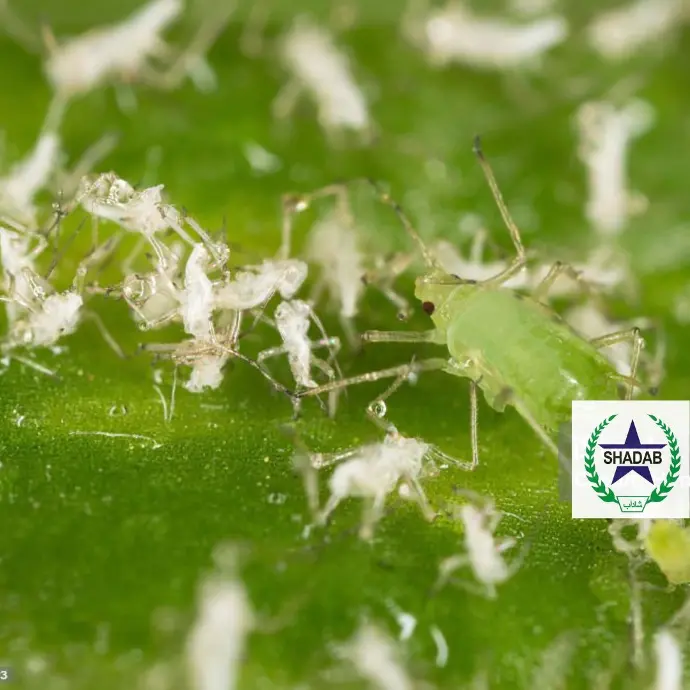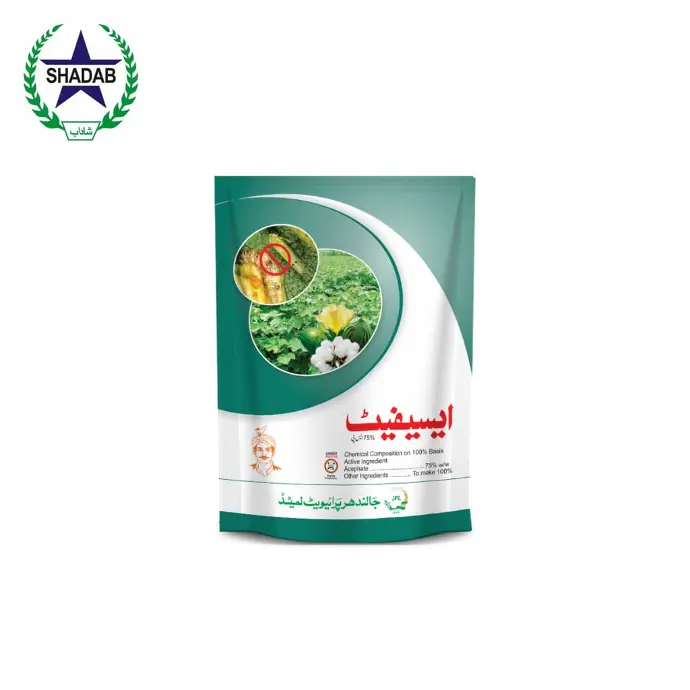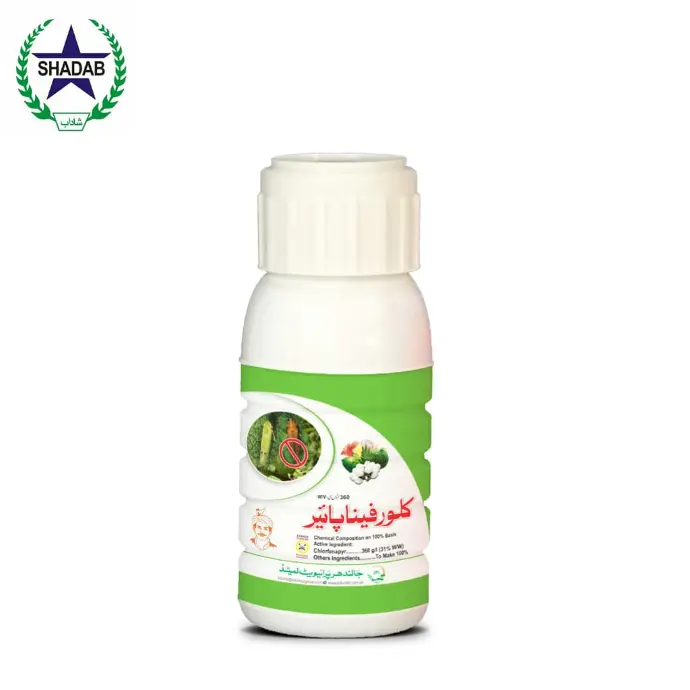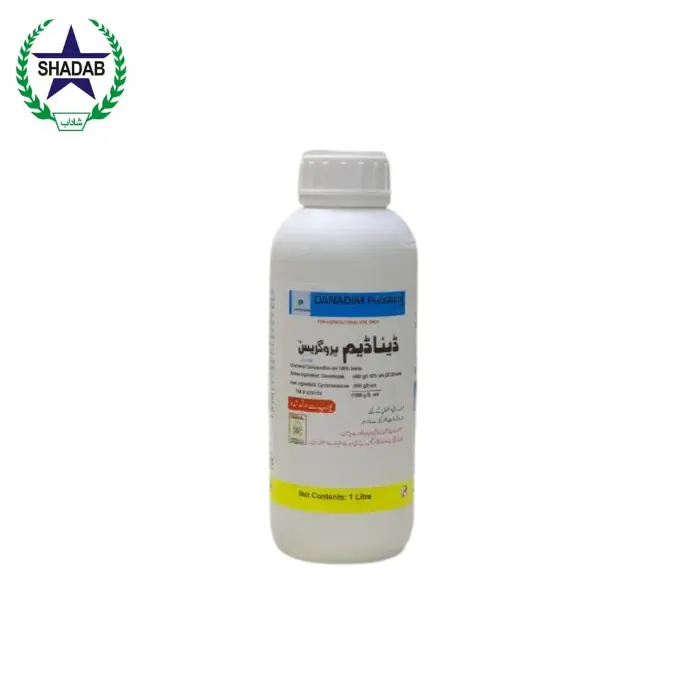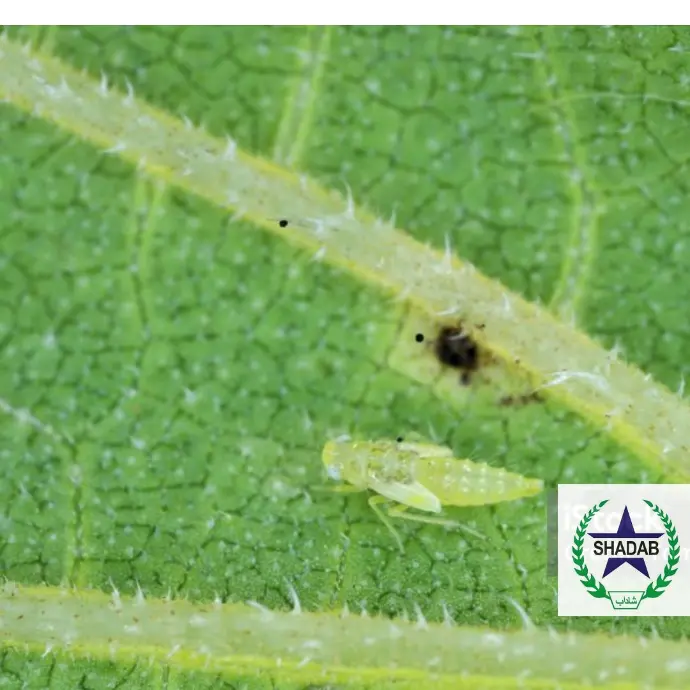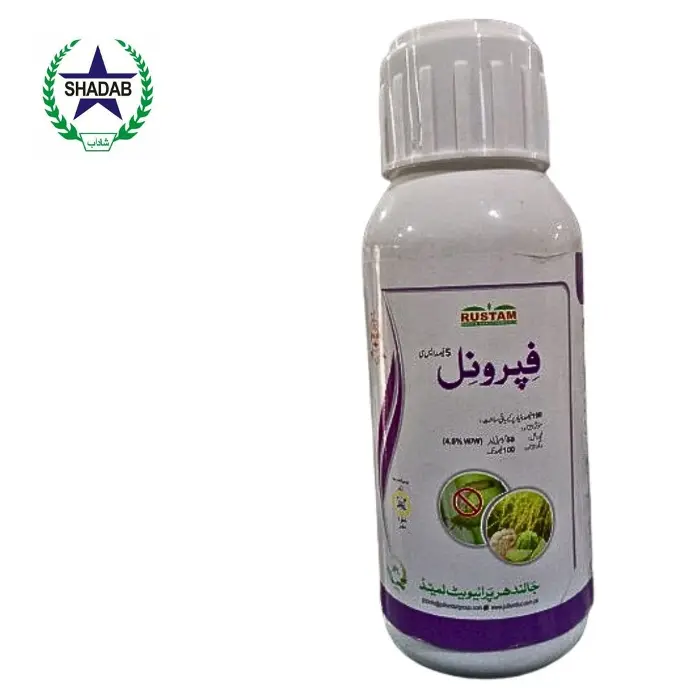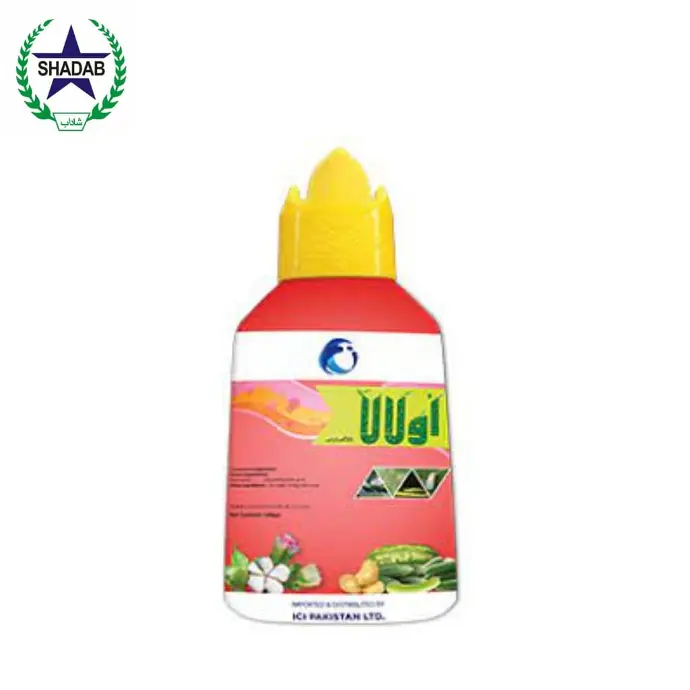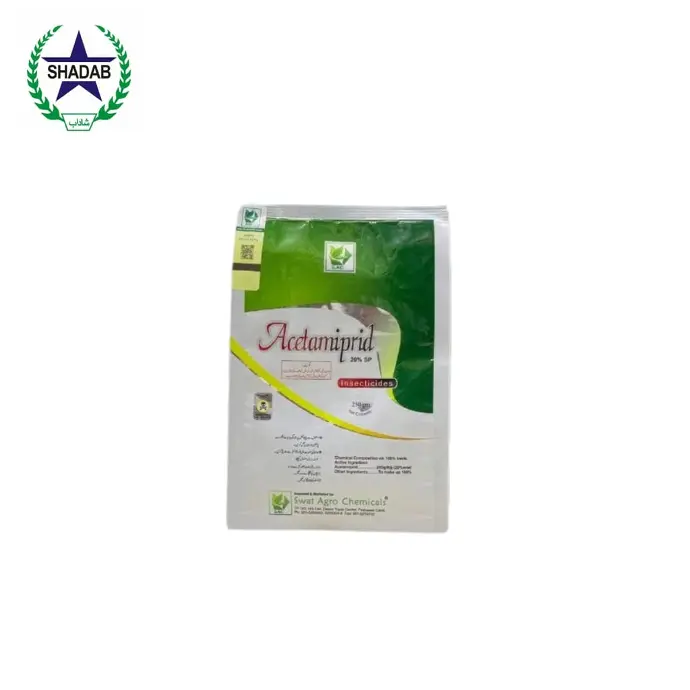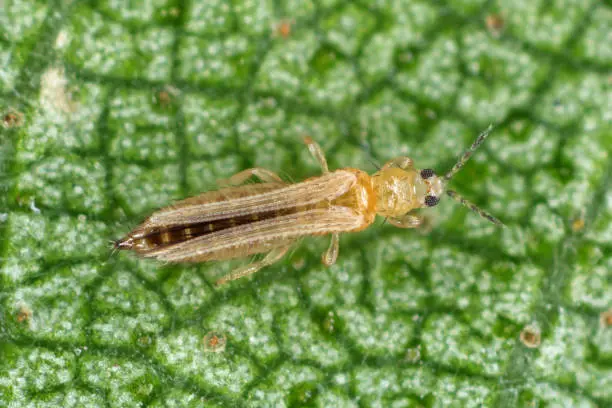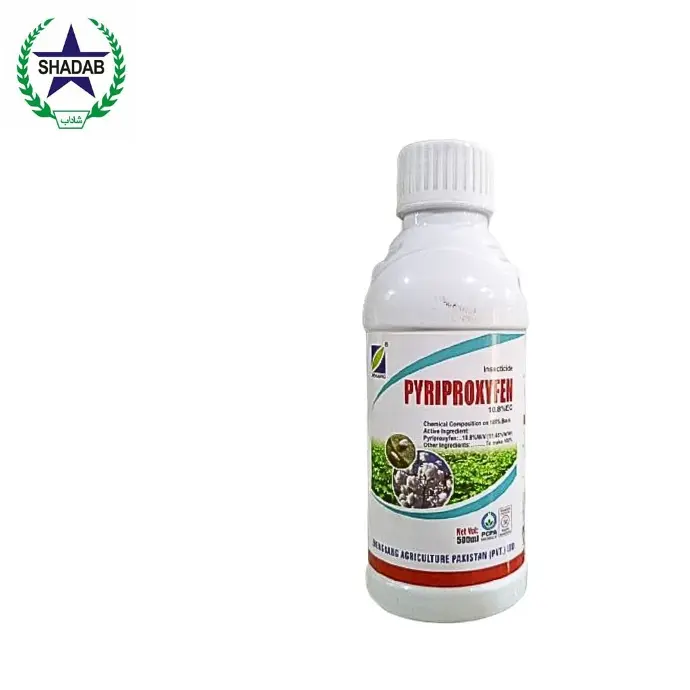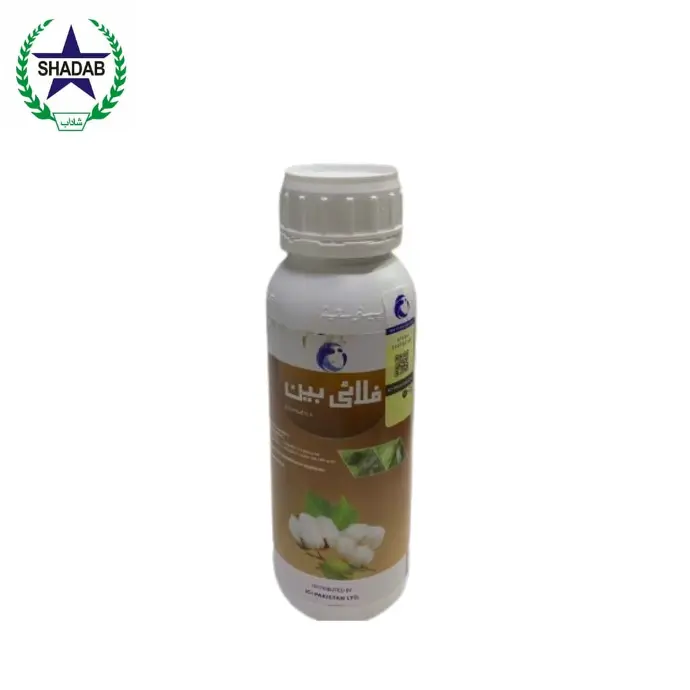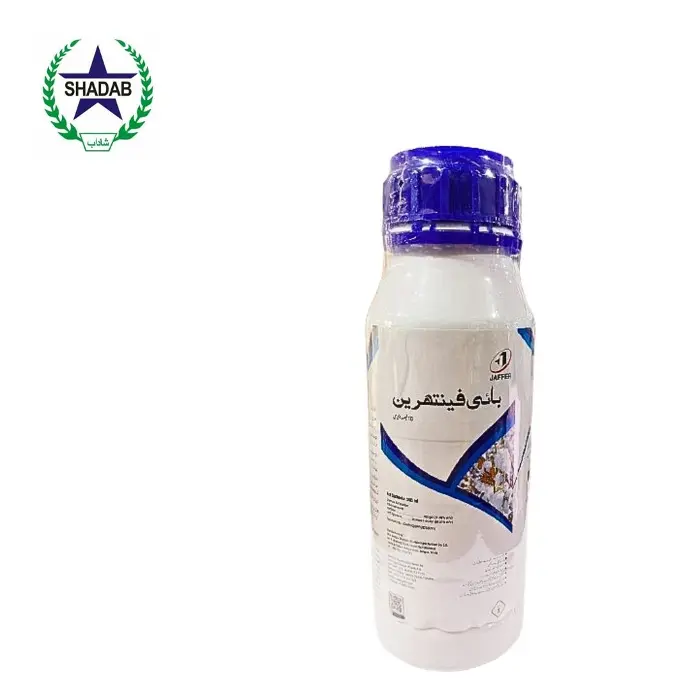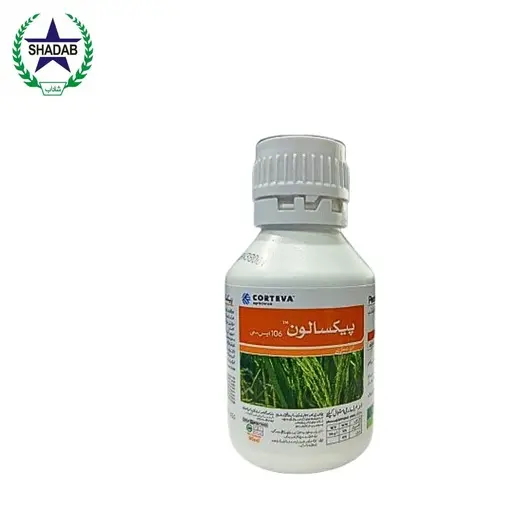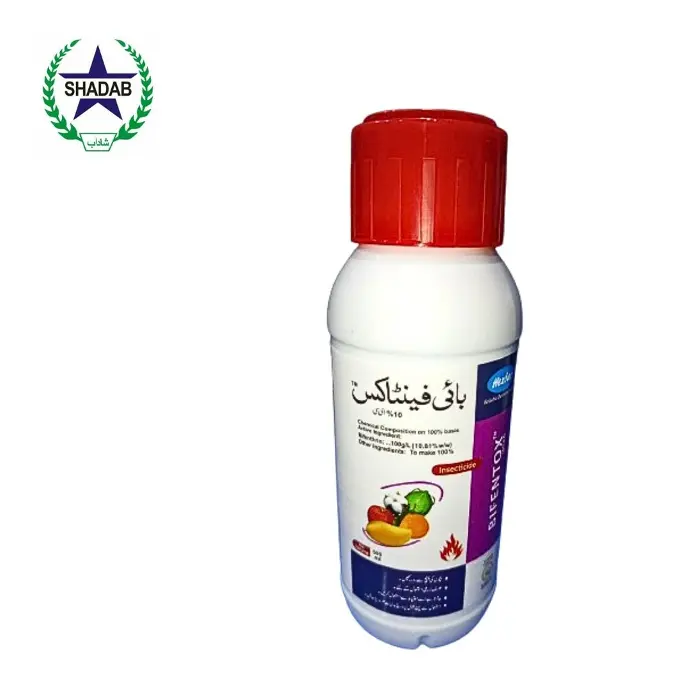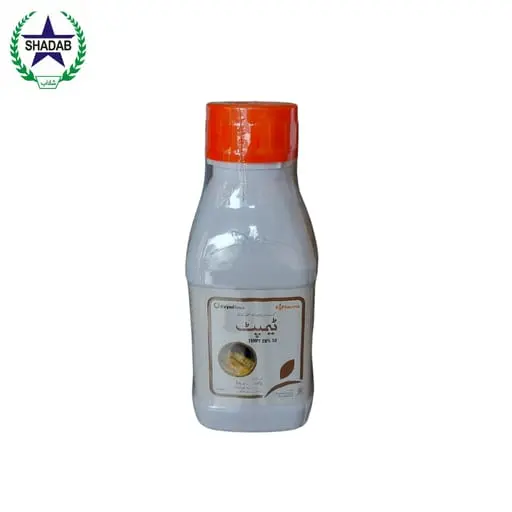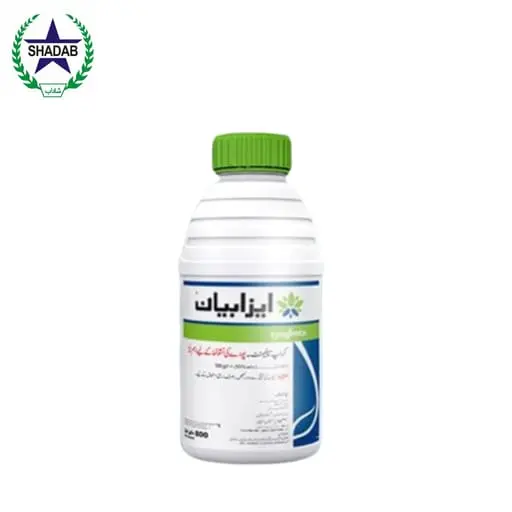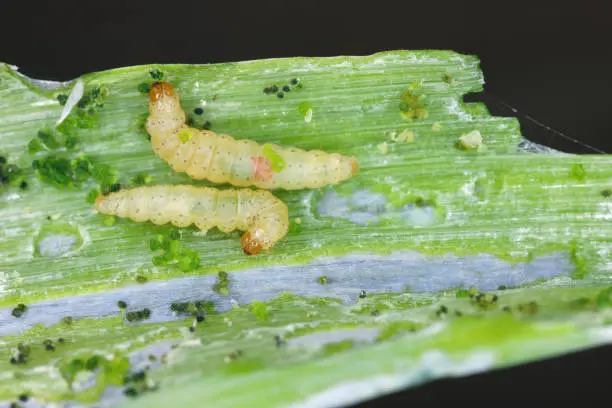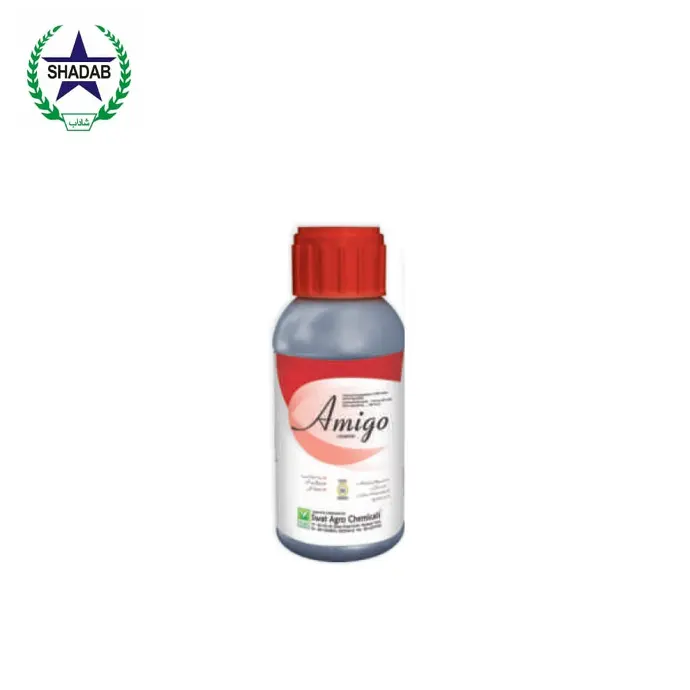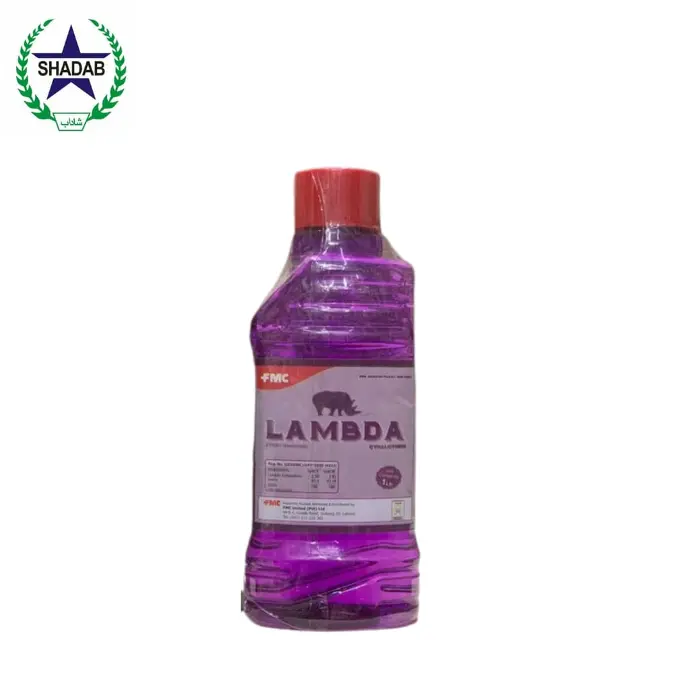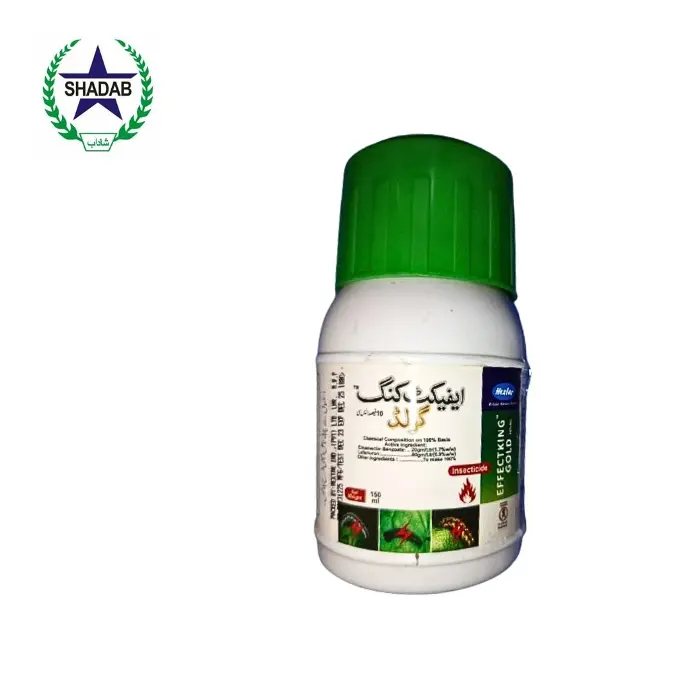Cotton Insect Pests Management
Management of Cotton Jassid
Effective management of cotton jassids and other pests requires careful consideration of the economic threshold level (ETL) and the appropriate chemical treatments. For controlling these pests, the application of Chlorfenapyr at a concentration of 36% is recommended at a dosage of 150 ml per acre. Additionally, Dimethoate, should be applied at a rate of 250 to 300 ml per acre. In cases where thrips are present, with a threshold of 8 to 10 nymphs or adults per leaf, Acephate at 75% concentration is advised at a dosage of 250 grams per acre. For a more integrated approach, a combination of Chlorfenapyr 12% SC can be utilized at 150 ml per acre. Alternatively, a mixture of Chlorfenapyr at 36% and Fipronil can be applied at a ratio of 100 ml to 320 ml per acre, particularly in instances of severe infestation, where a 5% concentration may be warranted. It is crucial to repeat the spraying process every 5 to 6 days to ensure effective pest management and to mitigate the risk of further outbreaks.
کپاس کے جیسڈز اور دیگر کیڑوں کے موثر انتظام کے لیے اقتصادی حد کی سطح (ETL) اور مناسب کیمیائی علاج پر احتیاط سے غور کرنے کی ضرورت ہے۔ ان کیڑوں کو کنٹرول کرنے کے لیے 150 ملی لیٹر فی ایکڑ کے حساب سے کلورفیناپیر کو 36 فیصد کے ارتکاز میں استعمال کرنے کی سفارش کی جاتی ہے۔ مزید برآں، Dimethoate، جسے عرف عام میں کہا جاتا ہے، 250 سے 300 ملی لیٹر فی ایکڑ کی شرح سے لگانا چاہیے۔ ایسی صورتوں میں جہاں تھرپس موجود ہوں، 8 سے 10 اپسرا یا بالغ افراد فی پتی کی حد کے ساتھ، 250 گرام فی ایکڑ کی خوراک میں 75 فیصد ارتکاز پر Acephate کا مشورہ دیا جاتا ہے۔ مزید مربوط نقطہ نظر کے لیے، 12% SC پر Chlorfenapyr کے مرکب کو 150 ملی لیٹر فی ایکڑ کے حساب سے استعمال کیا جا سکتا ہے۔ متبادل طور پر، کلورفیناپائر کا 36% اور Fipronil کا مرکب 100 ملی لیٹر سے 320 ملی لیٹر فی ایکڑ کے تناسب سے لگایا جا سکتا ہے، خاص طور پر شدید انفیکشن کی صورتوں میں، جہاں 5% ارتکاز کی ضمانت دی جا سکتی ہے۔ کیڑوں کے موثر انتظام کو یقینی بنانے اور مزید پھیلنے کے خطرے کو کم کرنے کے لیے چھڑکاو کے عمل کو ہر 5 سے 6 دن میں دہرانا بہت ضروری ہے۔
Management of Cotton Thrips
Insect pests, specifically thrips, pose a significant threat to cotton crops. The effective treatment options include a combination of Acetamiprid and Pyriproxyfen at a concentration of 41.6%, which should be applied at a rate of 250 ml per acre targeting both nymphs and adults. Additionally, Buprofezin at 25% concentration is recommended for nymph control, with a dosage of 600 grams per acre.For the management of whiteflies, which may include up to five nymphs or adults per leaf, various chemical treatments are available. Pyriproxyfen at 10.8% concentration can be applied at a rate of 400-500 ml per acre. Other options include Diafenthiuron at 50% concentration for adults, applied at 100-150 ml per acre, Flonicamid (Ulala) at 80 grams per acre,is recommended.
کیڑے مکوڑے، خاص طور پر تھرپس، کپاس کی فصلوں کے لیے ایک اہم خطرہ ہیں۔ مؤثر علاج کے اختیارات میں Acetamiprid اور Pyriproxyfen کا 41.6 فیصد ارتکاز شامل ہے، جو 250 ملی لیٹر فی ایکڑ کی شرح سے اپسرا اور بالغ دونوں کو نشانہ بنایا جانا چاہیے۔ مزید برآں، اپسرا کے کنٹرول کے لیے 600 گرام فی ایکڑ خوراک کے ساتھ Buprofezin کی سفارش کی جاتی ہے، جس میں فی پتی پانچ اپسرا یا بالغ افراد شامل ہو سکتے ہیں، مختلف کیمیائی علاج دستیاب ہیں۔ Pyriproxyfen 10.8% ارتکاز پر 400-500 ml فی ایکڑ کی شرح سے لاگو کیا جا سکتا ہے، جبکہ گرام فی ایکڑ کی شرح سے مؤثر ہے۔ دیگر اختیارات میں بالغوں کے لیے 50% ارتکاز پر Diafenthiuron، 100-150 ml فی ایکڑ، Flonicamid (Ulala) 80 گرام فی ایکڑ، اور Spirotetramate 24% ارتکاز l فی ایکڑ کی مقدار میں شامل ہیں۔
Management of Mealy Bug and Dusky Cotton Bug
Cultural management practices are essential in mitigating the spread of mealy bugs. It is imperative to refrain from disposing of uprooted plants infested with mealy bugs in water channels or open areas; instead, these plants should be incinerated to prevent further infestation. Additionally, the growth of congress grass around cotton fields should be curtailed, as it heightens the risk of mealy bug attacks. To limit the dissemination of mealy bugs to unaffected regions, it is crucial to restrict the movement of individuals and animals from infested areas to healthy crops.In order to effectively manage mealy bugs, as well as the dusky cotton bug and red cotton bug, the application of clothianidin 20% SC at a rate of 150 to 200 ml per acre is recommended. This chemical treatment serves as a vital component in the integrated pest management strategy, ensuring that the populations of these pests are kept under control and do not adversely affect cotton production. Implementing these measures will contribute to healthier crops and improved yields.
میلی بگز کے پھیلاؤ کو کم کرنے کے لیے ثقافتی انتظام کے طریقے ضروری ہیں۔ پانی کی نالیوں یا کھلی جگہوں میں میلی کیڑوں سے متاثرہ جڑوں والے پودوں کو تلف کرنے سے گریز کرنا ضروری ہے۔ اس کے بجائے، ان پودوں کو مزید انفیکشن سے بچنے کے لیے جلا دینا چاہیے۔ مزید برآں، کپاس کے کھیتوں کے ارد گرد کانگرس گھاس کی افزائش کو روکنا چاہیے، کیونکہ یہ میلی بگ کے حملے کے خطرے کو بڑھاتا ہے۔ میلی کیڑوں کے پھیلاؤ کو غیر متاثرہ علاقوں تک محدود کرنے کے لیے، متاثرہ علاقوں سے صحت مند فصلوں تک لوگوں اور جانوروں کی نقل و حرکت کو محدود کرنا بہت ضروری ہے تاکہ میلی کیڑوں کے ساتھ ساتھ دھول دار کپاس کے کیڑے اور سرخ کپاس کے کیڑے کا مؤثر طریقے سے انتظام کیا جا سکے۔ Clothianidin 20% SC 150 سے 200 ملی لیٹر فی ایکڑ کی شرح سے استعمال کرنے کی سفارش کی جاتی ہے۔ یہ کیمیائی علاج مربوط کیڑوں کے انتظام کی حکمت عملی میں ایک اہم جزو کے طور پر کام کرتا ہے، اس بات کو یقینی بناتا ہے کہ ان کیڑوں کی آبادی کو کنٹرول میں رکھا جائے اور کپاس کی پیداوار پر منفی اثر نہ پڑے۔ ان اقدامات پر عمل درآمد صحت مند فصلوں اور بہتر پیداوار میں معاون ثابت ہوگا۔
Management of pink Boll Worm
Effective management of the pink bollworm, a significant pest affecting crops, requires careful consideration of various control measures. The recommended chemical treatments include Abamectin at a concentration of 1.9% EC, applied at a rate of 400 ml per acre. Additionally, Bifenthrin at 10% can be utilized at a dosage of 350 ml, while Triazophos at 40% should be administered in quantities ranging from 500 to 660 ml, particularly when targeting five larvae per 100 immature bolls.Further options for pest control involve the combination of Abamectin and Triazophos at a concentration of 20%, with a suggested application of 660 ml. Lambda cyhalothrin, in conjunction with Triazophos at 21%, can be applied at 550 to 660 ml, alongside a separate application of 80 ml of Spinetoram at 12%. Lastly, Lambda cyhalothrin at 2.5% should be used at a rate of 330 ml, while Gamma cyhalothrin at 6% is recommended at 100 ml to ensure comprehensive pest management.
فصلوں کو متاثر کرنے والے ایک اہم کیڑے گلابی بول ورم کے مؤثر انتظام کے لیے مختلف کنٹرول اقدامات پر احتیاط سے غور کرنے کی ضرورت ہے۔ تجویز کردہ کیمیائی علاج میں Abamectin 1.9% EC کے ارتکاز میں شامل ہے، جس کا اطلاق 400 ملی لیٹر فی ایکڑ کی شرح سے کیا جاتا ہے۔ مزید برآں، Bifenthrin 10% پر 350 ml کی خوراک میں استعمال کیا جا سکتا ہے، جبکہ Triazophos 40% کو 500 سے 660 ml تک کی مقدار میں دیا جانا چاہیے، خاص طور پر جب پانچ لاروا فی 100 ناپختہ بالوں کو نشانہ بنایا جائے۔ Abamectin اور Triazophos کا مجموعہ 20% کے ارتکاز میں، تجویز کردہ استعمال کے ساتھ 660 ml۔ Lambda cyhalothrin، Triazophos کے ساتھ 21% پر، 550 سے 660 ملی لیٹر پر لاگو کیا جا سکتا ہے، اس کے ساتھ 12% پر Spinetoram کے 80 ملی لیٹر کا الگ استعمال کیا جا سکتا ہے۔ آخر میں، 2.5% پر Lambda cyhalothrin 330 ml کی شرح سے استعمال کی جانی چاہیے، جبکہ Gamma cyhalothrin % 100 ml پر تجویز کی جاتی ہے تاکہ کیڑوں کے جامع انتظام کو یقینی بنایا جا سکے۔
Management of Armyworm
Cultural control methods for managing army worms and their larvae involve several strategic practices. Utilizing light traps can help determine the intensity of the pest population. It is advisable to install sex pheromone traps at a density of five per acre to monitor and attract these pests effectively. Additionally, conducting manual inspections is crucial for identifying the presence of larvae. Since larvae tend to cluster together, it is important to collect and eliminate both the early-stage larvae and the more developed caterpillars promptly to mitigate their impact.
فوج کے کیڑے اور ان کے لاروا کے انتظام کے لیے ثقافتی کنٹرول کے طریقوں میں کئی اسٹریٹجک طریقے شامل ہیں۔ روشنی کے پھندے استعمال کرنے سے کیڑوں کی آبادی کی شدت کا تعین کرنے میں مدد مل سکتی ہے۔ ان کیڑوں کو مؤثر طریقے سے مانیٹر کرنے اور اپنی طرف متوجہ کرنے کے لیے پانچ فی ایکڑ کی کثافت پر جنسی فیرومون ٹریپس لگانے کا مشورہ دیا جاتا ہے۔ مزید برآں، لاروا کی موجودگی کی شناخت کے لیے دستی معائنہ کرنا بہت ضروری ہے۔ چونکہ لاروا ایک ساتھ جمع ہوتے ہیں، اس لیے ان کے اثرات کو کم کرنے کے لیے ابتدائی مرحلے کے لاروا اور زیادہ ترقی یافتہ کیٹرپلر دونوں کو فوری طور پر اکٹھا کرنا اور ختم کرنا ضروری ہے۔
Management of American Bollworm
Cultural Control involves several strategic practices to enhance cotton cultivation. It is advisable to refrain from continuous cotton cropping and mono-cropping systems. Instead, incorporating less favored crops such as green gram, black gram, soybean, castor, and sorghum as inter-crops or border crops can significantly mitigate pest infestations. Prior to planting cotton, it is essential to eliminate any residual crop material from previous harvests. Additionally, applying the appropriate amount of water while avoiding excessive nitrogen fertilizer is crucial. Utilizing resistant varieties can also help in managing threats such as the American bollworm.
ثقافتی کنٹرول میں کپاس کی کاشت کو بڑھانے کے لیے کئی اسٹریٹجک طریقے شامل ہیں۔ کپاس کی مسلسل کٹائی اور مونو کراپنگ سسٹم سے پرہیز کرنے کا مشورہ دیا جاتا ہے۔ اس کے بجائے، کم پسندیدہ فصلوں جیسے سبز چنا، کالا چنا، سویا بین، ارنڈ، اور جوار کو بین فصلوں یا سرحدی فصلوں کے طور پر شامل کرنا کیڑوں کے انفیکشن کو نمایاں طور پر کم کر سکتا ہے۔ کپاس کی کاشت سے پہلے، یہ ضروری ہے کہ پچھلی فصلوں سے فصل کے کسی بھی بقایا مواد کو ختم کر دیا جائے۔ مزید برآں، ضرورت سے زیادہ نائٹروجن کھاد سے پرہیز کرتے ہوئے پانی کی مناسب مقدار کا استعمال بہت ضروری ہے۔ مزاحم اقسام کا استعمال امریکی بول ورم جیسے خطرات سے نمٹنے میں بھی مددگار ثابت ہو سکتا ہے۔
Control of Spotted Bollworm
Effective management of insect pests, specifically the spotted bollworm, requires careful monitoring and application of appropriate chemical controls based on established economic threshold levels (ETL). For the tobacco caterpillar, treatment should be initiated upon the observation of infestation in the field. The recommended chemical is Leufenuron at a concentration of 5%, with a dosage of 200 ml per acre.For the American bollworm, intervention is warranted when there are five eggs or three larvae present on every 25 plants. In this case, Amamectin benzoate at a concentration of 1.9 EC is advised, with a dosage of 400 ml per acre. Additionally, for the spotted bollworm, treatment is suggested when three larvae are detected on 25 plants, utilizing either Lambda cyhalothrin at 2.5% EC or cypermethrin, both at a dosage of 330 ml per acre.
کیڑے مکوڑوں کے مؤثر انتظام کے لیے، خاص طور پر دھبے والے بول ورم کے لیے، قائم اقتصادی حد کی سطح (ETL) کی بنیاد پر محتاط نگرانی اور مناسب کیمیائی کنٹرول کے اطلاق کی ضرورت ہوتی ہے۔ تمباکو کے کیٹرپلر کے لیے، کھیت میں انفیکشن کے مشاہدے پر علاج شروع کیا جانا چاہیے۔ تجویز کردہ کیمیکل لیوفینورون ہے جس کی مقدار 5% ہے، جس کی خوراک 200 ملی لیٹر فی ایکڑ ہے، جب ہر 25 پودوں پر پانچ انڈے یا تین لاروا موجود ہوں۔ اس صورت میں، Amamectin benzoate کو 1.9 EC کے ارتکاز پر تجویز کیا جاتا ہے، جس کی خوراک 400 ملی لیٹر فی ایکڑ ہے۔ مزید برآں، دھبے والے کیڑے کے لیے، علاج تجویز کیا جاتا ہے جب 25 پودوں پر تین لاروا پائے جاتے ہیں، جس میں لیمبڈا سائہالوتھرین کو 2.5% EC یا سائپرمیتھرین، دونوں کی مقدار 330 ملی لیٹر فی ایکڑ پر استعمال کریں۔
